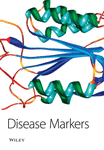Detection of Autoantibodies Against Glycosylated-DNA in Diabetic Subjects: Its Possible Correlation with HbA1C
Abstract
Aims: The vascular tissues have a long memory of their previous glycemic control and intervention studies have demonstrated that microvascular complications are highly correlated with mean glycemic control as measured by glycolated hemoglobin A1C (HbA1c). The present study was carried out to evaluate the autoantibodies against glycosylated DNA (DNAAGEs) in diabetic sera to see if the level of HbA1c has correlation with the activity of DNA-AGEs, another marker of chronic glycemia.
Methods: Glucose-6-phosphate induced glycosylation of native DNA was studied in 150 diabetic sera (T1DM = 9, T2DM = 141) by spectroscopic techniques (UV and fluorescence) and agarose gel electrophoresis. Direct binding and inhibition enzyme immunoassays were carried out to evaluate binding and specificity of anti-glycated-DNA autoantibodies (anti-DNA-AGE autoantibodies) in sera of diabetes patients. A quantitative estimation of HbA1c was carried out in normal and diabetes sera.
Results: Anti-DNA-AGEs autoantibodies in 55% of diabetic sera (85/150) showed more binding with glycated-DNA compared to native DNA which was subjected to inhibition ELISA indicating true interaction of these autoantibodies in diabetes with glycated DNA. Higher binding with glycosylated-DNA against native-DNA was observed in subjects with HbA1c of 9.8 ± 3.3% compared to those with HbA1c of 7.7 ± 1.7% (p < 0.001). Linear correlation analysis showed that mean absorbance difference was significantly related to HbA1c (r = 0.486, p < 0.001), nephropathy (r = 0.239, p < 0.003), retinopathy (r = 0.165, p < 0.05).
Conclusions: Autoantibodies against glycosylated DNA were correlated with HbA1c and microvascular complications and may be useful as another biomarker for assessment of chronic glycemia.




